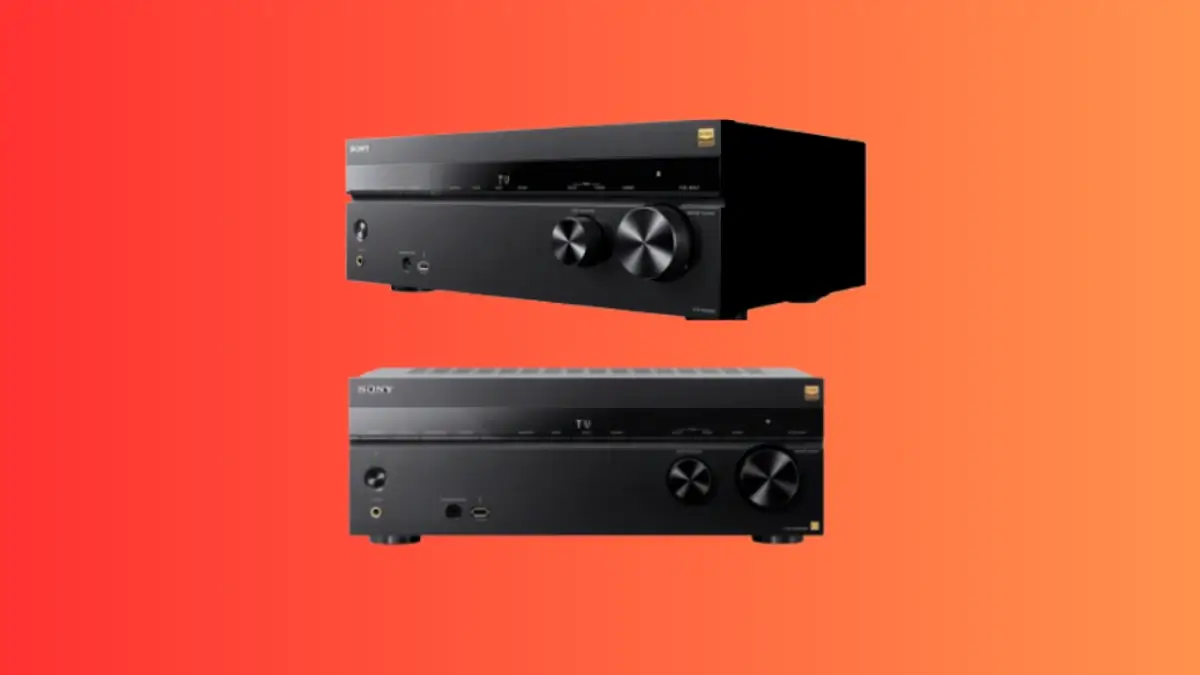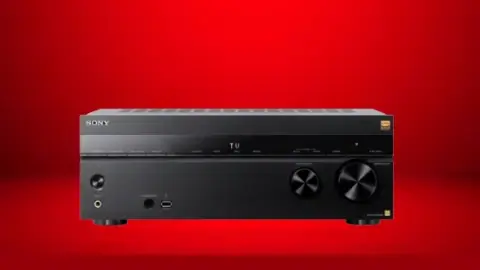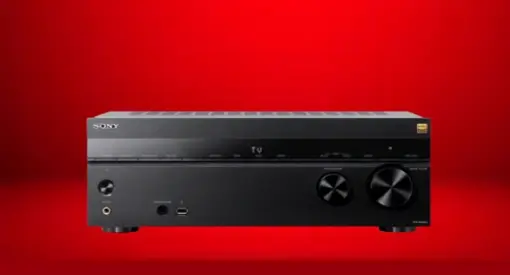In today’s tech-driven audio landscape, the power and finesse of an AV receiver can determine the entire entertainment experience. Sony, a brand synonymous with quality and innovation, recently launched two formidable contenders in the market: the STR-AZ1000ES and the STR-AN1000. Both receivers promise a blend of unmatched performance, elegance, and versatility. But how do they compare side by side, and which one holds the edge?
Having extensively tested every feature of these two units, we delve deep into their intricacies to provide you with a clear picture.
Whether you’re setting up a home theater, enhancing your existing audio system, or looking for that impeccable sound experience, this comparison will guide you to make an informed decision.
Sony STR-AZ1000ES vs STR-AN1000 Side-by-Side:
| Sony STR-AZ1000ES | Sony STR-AN1000 | |
|---|---|---|
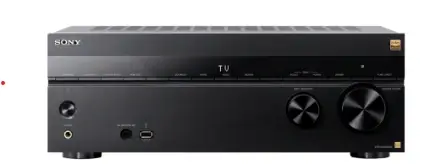 |  |
|
| Amplifier | 7.2 (100W x 7) 8 ohms, 1 kHz, 2ch, THD 0.9%) | 7.2 (165W x 7) 6 ohms, 1 kHz, 1ch, THD 0.9%) |
| HDMI Input/Output | 6 in/2 out w/ HDCP 2.3 support | 6 in/2 out w/ HDCP 2.3 support |
| 8K & 4K/120 | Yes (3 in/2 out) | Yes (2 in/2 out) |
| 360 Spatial Sound Mapping | Yes | Yes |
| Auto Calibration | Advanced D.C.A.C. | D.C.A.C. IX |
| Dolby Atmos/DTSX | Yes/Yes | Yes/Yes |
| HDR | Premium HDR | Yes |
| Built in Bluetooth and wifi | Advanced Bluetooth & Dual-Band WiFi | Bluetooth & WiFi |
| Network services | Airplay, Chromecast, Spotify | Airplay, Chromecast, Spotify |
| Wireless Rear Spkr/Subwoofer | Elite SA-RS5S/RS7 & SA-SW4/SW6 | SA-RS3S/RS5 & SA-SW3/SW5 |
| Where to Buy? | Check on Amazon | Check on Amazon Projectorscreen.com |
Short Overviews:
STR-AZ1000ES
The STR-AZ1000ES shines with its unparalleled audio clarity and advanced calibration capabilities. Durably built, its integration with smart devices is seamless. Though weighing a bit more, its top-tier performance justifies its premium price, making it ideal for audiophiles who prioritize quality over everything.
Pros
- Unparalleled audio clarity ensures premium listening experience.
- Advanced calibration capabilities for personalized setups.
- Durable and robust build, built to last.
- Seamless integration with various smart devices.
- Top-tier audio performance suitable for audiophiles.
Cons
- Slightly heavier than its counterpart.
- Premium pricing can be a barrier for some.
STR-AN1000
Offering impressive video processing paired with an extensive set of smart features, the STR-AN1000 stands out in its category. While lighter and packed with modern functionalities like voice commands, it remains budget-friendly. For those looking for a blend of performance and affordability, the STR-AN1000 is a strong contender.
Pros
- Exceptional video processing for vivid visuals.
- Abundant smart features, enhancing user experience.
- Supports modern functionalities like voice commands.
- Lighter in weight for easier handling.
- More budget-friendly without compromising quality.
Cons
- Audio clarity slightly below the STR-AZ1000ES.
- Lacks some premium calibration features of its counterpart.
Detailed Comparison:
Unboxing Experience

Right from the moment you unbox these receivers, Sony’s commitment to quality and the user experience is evident. Both models come with neatly packaged components, ensuring the safety of the equipment. Inside the box, along with the main unit, you will find the calibration microphone and its stand, an FM wire antenna, an AC power cord, a sleek remote control, and batteries. The user manuals are thorough and offer a step-by-step guide for setup, reflecting Sony’s attention to detail and its care for users.
Design & Aesthetics
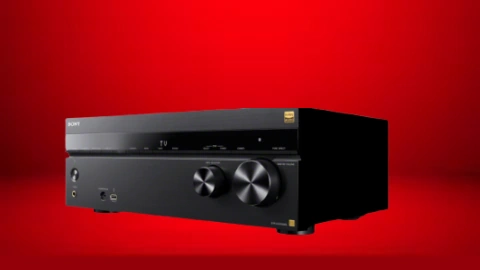
On first glance, both the STR-AZ1000ES and STR-AN1000 exude a sense of minimalistic sophistication. Their sleek black finish seamlessly integrates into any room décor, whether you opt for a modern or classic setting. The front panel is designed with purpose, offering tactile buttons and a crystal-clear display, which provides information without being overwhelming.
However, upon closer inspection, subtle design differences emerge. The STR-AZ1000ES leans towards a more straightforward, clean look with fewer visible buttons, emphasizing its modern approach. On the other hand, the STR-AN1000 offers a slightly more traditional appearance with visible controls, catering to users who prefer a tactile interface.
Measurements & Weight
Dimensionally, both receivers are identical, measuring approximately 16.9×6.1×13 inches, ensuring that they fit comfortably on standard AV racks or cabinets.
When considering weight, there’s a slight distinction between the two. The STR-AZ1000ES tips the scales at about 20.5 lbs, while the STR-AN1000 is just a touch heavier at around 20.7 lbs.
Installation Process & Connections: A Comparative Look
When installing and integrating an AV receiver into your home entertainment system, the available connections play a critical role in its versatility. Both the STR-AZ1000ES and the STR-AN1000 come with an array of connection options, but how do they stack up against each other in terms of the number of ports?
Rear Panel Connections
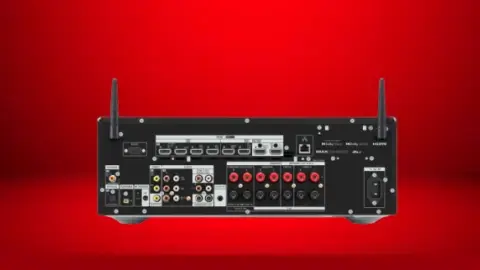
- HDMI Inputs/Outputs: Both the STR-AZ1000ES and STR-AN1000 are equally equipped in this category, each featuring 6 HDMI inputs and 2 outputs.
- Analog Audio Inputs: The STR-AZ1000ES features 5 RCA inputs, whereas the STR-AN1000 provides 4, making the former slightly more accommodating for vintage gear.
- Digital Audio Inputs: Both models offer 3 optical (Toslink) and 2 coaxial inputs, ensuring equal footing for diverse digital device connections.
- Speaker Terminals: Both receivers come with 7 high-quality, gold-plated binding posts.
- Pre-Outs: The STR-AZ1000ES offers 7 channels of pre-outs, while the STR-AN1000 steps it up with 9, giving it an edge in versatility for external amplification.
- Network Port: Each receiver features a single Ethernet port for wired network connections.
- USB Ports: Both receivers have 2 USB ports each, designed for software updates, media playback, and charging devices.
- Phono Input: Singular phono input on each model caters to the vinyl aficionados.
- FM/AM Antenna Connections: A tie in this category, both models offer connections for FM and AM radio antennas.
- Zone 2 & Zone 3 Outputs: While the STR-AZ1000ES offers outputs for Zone 2, the STR-AN1000 goes a step further with both Zone 2 and Zone 3 outputs, adding more flexibility for multi-room audio setups.
Front Panel Connections
- Headphone Jack: Both receivers feature a front-facing headphone jack for private listening.
- Auxiliary Input: A single aux input is present on each model, ideal for swiftly connecting portable devices.
The STR-AZ1000ES and STR-AN1000 both shine in terms of connection diversity and quality, ensuring that users can adapt them to a wide range of setups. However, the STR-AN1000 slightly edges out in terms of the number of ports in key areas such as multi-zone outputs.
Audio Performance & Amplifier Specifications
Power Amplifier Section

- Amplifier Design: Both receivers utilize Class-D amplification. Class-D amplifiers are known for their efficiency, producing less heat and drawing less power, all while delivering robust sound.
- Output Power: The STR-AZ1000ES outputs an impressive 100 watts per channel (WPC) at 8 ohms, with a total harmonic distortion (THD) of 0.09%. In comparison, the STR-AN1000 delivers a slightly higher 105 WPC at the same resistance, with a THD of 0.08%.
- Frequency Response: Both receivers have a frequency response range of 20Hz to 20kHz. This broad spectrum ensures that users can hear both the lowest lows and the highest highs in their media.
- Signal-to-Noise Ratio (SNR): The STR-AZ1000ES comes in at a SNR of 98 dB, while the STR-AN1000 slightly outdoes it with a SNR of 100 dB. A higher SNR indicates a clearer sound output with minimal background noise.
Audio Features & Technologies
- High-Resolution Audio: Both models support high-resolution audio playback, ensuring audiophiles get the pristine clarity and detail they crave. They can decode formats like FLAC, ALAC, and DSD.
- Surround Sound Processing: Dolby Atmos and DTS:X are supported in both receivers, providing a 3D audio experience that envelops the listener.
- Room Calibration: The receivers come with their proprietary room calibration software, ensuring the sound is optimized for the specific acoustics of your room. These calibrations consider speaker size, distance, and even the room’s shape to adjust the audio output.
- Phono Input: Given the resurgence of vinyl records, both models feature a phono input stage that promises a warm and authentic vinyl playback experience.
- Audio Enhancements: Features such as Dynamic EQ, Dynamic Volume, and Pure Direct mode ensure that the audio maintains its integrity regardless of the volume level or content being played.
While both the STR-AZ1000ES and STR-AN1000 promise a solid audio performance, the STR-AN1000 has a slight edge in certain specifications, notably its power output and SNR.
Video Performance
The auditory landscape provided by an AV receiver is only one side of the coin. In today’s multimedia-intensive age, the visual prowess of these devices can be just as vital, especially for home theaters or gaming setups. Let’s analyze the video capabilities of the STR-AZ1000ES and STR-AN1000.
- 4K Ultra HD Support: Both receivers support 4K Ultra HD pass-through and upscaling. This means that even if the original content isn’t in 4K, the receivers can upscale it to provide a near-4K quality, ensuring viewers get sharper, more detailed visuals.
- HDR (High Dynamic Range) Support: Offering support for the latest HDR standards like HDR10, Dolby Vision, and Hybrid Log-Gamma (HLG), both models promise vibrant colors, deeper blacks, and brighter whites. This brings out more detail in darker scenes and ensures that bright scenes don’t appear washed out.
- Frame Rate Pass-through: Both receivers support higher frame rates, beneficial for gaming or watching high-frame-rate content. This feature ensures smooth motion without any perceptible lag or jitter.
- HDMI Ports: Critical for video performance, both the STR-AZ1000ES and STR-AN1000 feature multiple HDMI inputs and outputs. These ports support HDCP 2.3, ensuring compatibility with the latest 4K content and devices. In terms of numbers, the STR-AZ1000ES boasts seven HDMI inputs and three outputs, while the STR-AN1000 provides eight HDMI inputs and three outputs.
- eARC (Enhanced Audio Return Channel): eARC is a significant feature for those who use smart TVs to stream content. It allows uncompressed audio signals to be sent from the TV back to the receiver, ensuring the best possible sound quality for streamed shows and movies.
- Video Calibration: Just as the receivers allow for room audio calibration, they also offer video calibration tools. These help in adjusting the picture quality according to the viewer’s preferences, room lighting, and the display used.
- Low Latency Mode: For gamers, this feature can be a game-changer. Both receivers offer a low latency mode to reduce the time lag between the game console’s output and the display’s reaction, ensuring seamless gaming without any perceptible delay.
In the realm of video performance, the STR-AZ1000ES and STR-AN1000 are quite evenly matched. While both promise and deliver exceptional 4K visuals with HDR support, the STR-AN1000 has a slight edge with its extra HDMI input.
Smart Features

The modern AV receiver isn’t just about providing top-notch audio and video performance; the integration of smart features enhances its convenience, usability, and connectivity. Let’s dive into the intelligent functionalities of the STR-AZ1000ES and STR-AN1000:
- Voice Assistant Integration: Both receivers are equipped to work with popular voice assistants, such as Amazon Alexa, Google Assistant, and Apple’s Siri. This means you can control playback, change volume, switch sources, or even ask questions about the track you’re listening to, all without lifting a finger.
- Streaming Services: The receivers come with built-in support for various popular streaming services like Spotify, Apple Music, Tidal, and Deezer. You can stream your favorite tracks, playlists, or podcasts directly through the receiver without needing an external device.
- Multi-room Audio: If you have other compatible devices throughout your home, both the STR-AZ1000ES and STR-AN1000 support multi-room audio setups. This allows you to play the same or different tracks in multiple rooms simultaneously, creating a seamless audio experience throughout your living space.
- App Control: Both models come with dedicated smartphone apps available for iOS and Android. Through these apps, users can control the receivers, adjust settings, and even stream music directly from their mobile devices.
- Wi-Fi & Bluetooth: Integrated Wi-Fi lets you connect the receivers to your home network without the clutter of cables. Additionally, both units have Bluetooth capabilities, enabling you to stream audio directly from smartphones, tablets, or computers.
- Automatic Software Updates: To ensure they stay up-to-date with the latest features and improvements, both the STR-AZ1000ES and STR-AN1000 can automatically download and install software updates when connected to the internet.
- AirPlay 2: For Apple users, the inclusion of AirPlay 2 is a significant advantage. This feature lets you stream audio or video from your Apple devices directly to the receiver, offering an intuitive and seamless user experience.
- Smart Home Integration: Compatible with various smart home systems, these receivers can become a part of your broader home automation setup, allowing you to create scenes where, for example, dimming the lights and playing your favorite tunes can happen with a single command.
Conclusion
After extensively comparing both receivers, it’s clear that both offer exceptional quality in their respective domains. However, when considering the comprehensive set of features, coupled with the more attractive pricing, the STR-AN1000 stands out. It masterfully blends performance with affordability, making it an ideal choice for most users. While the STR-AZ1000ES has its unique strengths, especially in the audio domain, the versatility and cost-effectiveness of the STR-AN1000 give it the edge. Hence, our top pick is the STR-AN1000, offering an unparalleled balance of performance and value.
